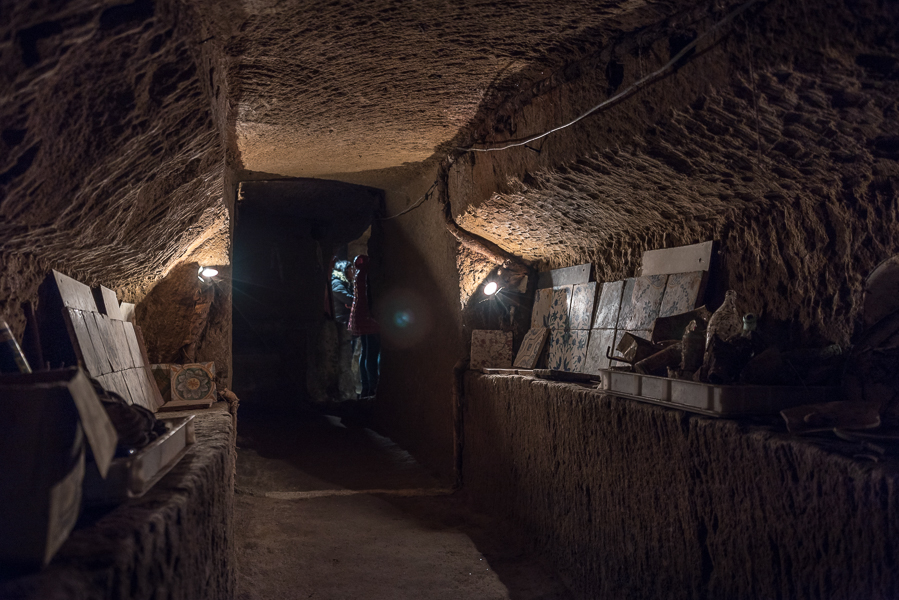Beyond the door of an ancient and typical house/shop of Rione Sanità, opens the underground world of Acquaquiglia del Pozzaro. Acquaquiglia del Pozzaro is a mysterious and suggestive journey in the underground of Naples; from a low rising in Via Fontanelle, you enter the magical-esoteric cavern bordering the world of the living and the dead, among wonders and legends.
An unexpected and evocative place a few steps from the famous Cemetery of Fontanelle.
A curious name in homage to a sixteenth-century fountain that once stood in front of the Church of Santa Maria La Nova. It seems that the water came out of two masks falling on a shell (in Neapolitan quaquilia). A visit to the Acquaquiglia del Pozzaro will help you understand how the Neapolitans, with their ingenuity and industriousness, were able to exploit the resources of the Neapolitan subsoil. Naples has a millenary history made of stones and waters, of caves dug in the belly of the tuff softened by spring waters, invested, according to legends, by magical powers and therapeutic properties, hidden among historical tanks and wells. The spring water was once considered "good for all ills" without smell or taste, able to heal and quench thirst instantly.
It is no coincidence that many of the propitiatory rites of antiquity took place in caves and sea cavities benefiting from the sea and freshwater springs, guardians of secrets with magical-religious functions.
They were probably dug by the cavamonte to collect and sort the water between the convents and the houses of the place. Here magic, superstitions, legends follow each other at the top of the skin and, to narrate the journey is Vincenzo Galiero, the owner of this Neapolitan "vascio" belonging to his family that one day he realizes to have under his feet, a real treasure; he discovers the tunnels of Acquaquiglia del Pozzaro, ancient tanks used in the past by the locals as cisterns and wells to draw water and meet the needs of the entire population.
They had been talked about for centuries, but until now, no one had been able to identify where the Acquaquiglia del Pozzaro channels were hidden. These tunnels included part of the house of Vincenzo’s grandfather, who here worked the cod inside five tanks now lost, the famous five wells called Acquaquiglia.it is told within these walls the famous story of the Munaciello, or the mischievous spirit of the Neapolitan tradition dressed as a monk who enjoys entering the houses to scare good-naturedly tenants, some inhabitants tend to justify the presence of Munaciello with the Pozzari.
The Pozzari were freelancers of medium stature who, thanks to their ability to descend into the narrowest tunnels, supplied water to the wells for residential use and had free access to the houses at any time of day.
From here the allusion to the Munaciello is easy: dressed in dark clothes similar to the friars’ habit.













